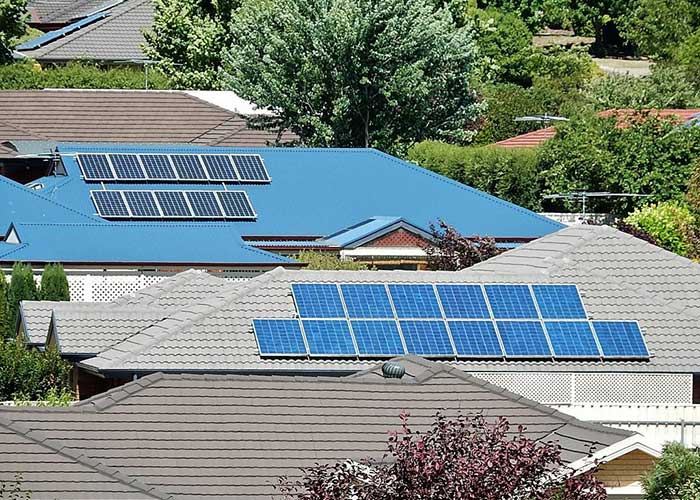
- Australia’s energy retailers AGL, Energy Australia and Origin Energy are increasing power prices this year.
- Increasing prices are because of the rising costs of generation and distribution of electricity.
- But there is no evidence that renewables like solar energy are to blame for price hikes.
- Outline of some ways that people can manage their electricity use during peak times.
- People can also combat increasing retail prices by installing solar panels and battery storage.
Some of Australia’s biggest energy retailers AGL, Energy Australia and Origin Energy are hiking up their electricity prices in 2018, yet again. It’s a recurring trend and one that is here to stay, according to energy experts, and burgeoning power bills are causing people to seriously consider installing a solar panel system.
So what are the reasons behind the price increases?
There are several. For a start, nearly a quarter of the average bill is the cost of generating energy, or the ‘wholesale electricity price’. This has risen dramatically in the past couple of years because there is less electricity supply in the market and prices have subsequently been pushed up. This is due mainly to the rising cost of gas affecting power produced by gas power plants and old coal power plants closing in South Australia and Victoria.
The price of distributing energy has also increased and is being reflected in rising network charges. This is because Australia has an extremely large electricity network and a lot of money goes into maintaining poles and wires that convey electricity from power plants to homes and businesses.
Building and installing new parts for the network isn’t cheap by any means either, but a lot of upgrades and investments to the network, especially in NSW and Queensland, haven’t been deemed necessary and have been described as “gold platingâ€Â. This is due to forecasts for electricity demand being too high after the global financial crisis.
By far and away the smallest component of the average bill is the cost of generating electricity through renewable sources. This includes the cost of meeting the nationwide Renewable Energy Target (RET) (aiming for 20% of the country’s electricity supply from renewable sources by 2020), plus ongoing costs of rooftop solar power schemes. The cost of rooftop solar power schemes varies from state to state as each government sets a feed-in tariff.
So accusations by detractors, who say that solar energy is to blame for price hikes, aren’t seeing the full picture. There is no evidence that renewables like solar energy are to blame for price increases. In fact solar energy is a very small part of the issue.
So what can people do on an individual level?
Reducing or better managing electricity during peak demand times is one suggestion to help lower your power usage. For example, turning off appliances if they’re not being used and doing the laundry at low peak times when power is cheaper. Another suggestion is using a Smart home system that can remotely cycle air-conditioners on and off.
If your power bill is still getting you down then the best way to combat rising retail prices is to install solar panels and battery storage. Even if you still need to use some power from the grid to top up, solar panels will help to significantly reduce your electricity usage. Many homeowners are finding that switching over to solar panels is a lifesaver when peak demand electricity prices are going through the roof.









